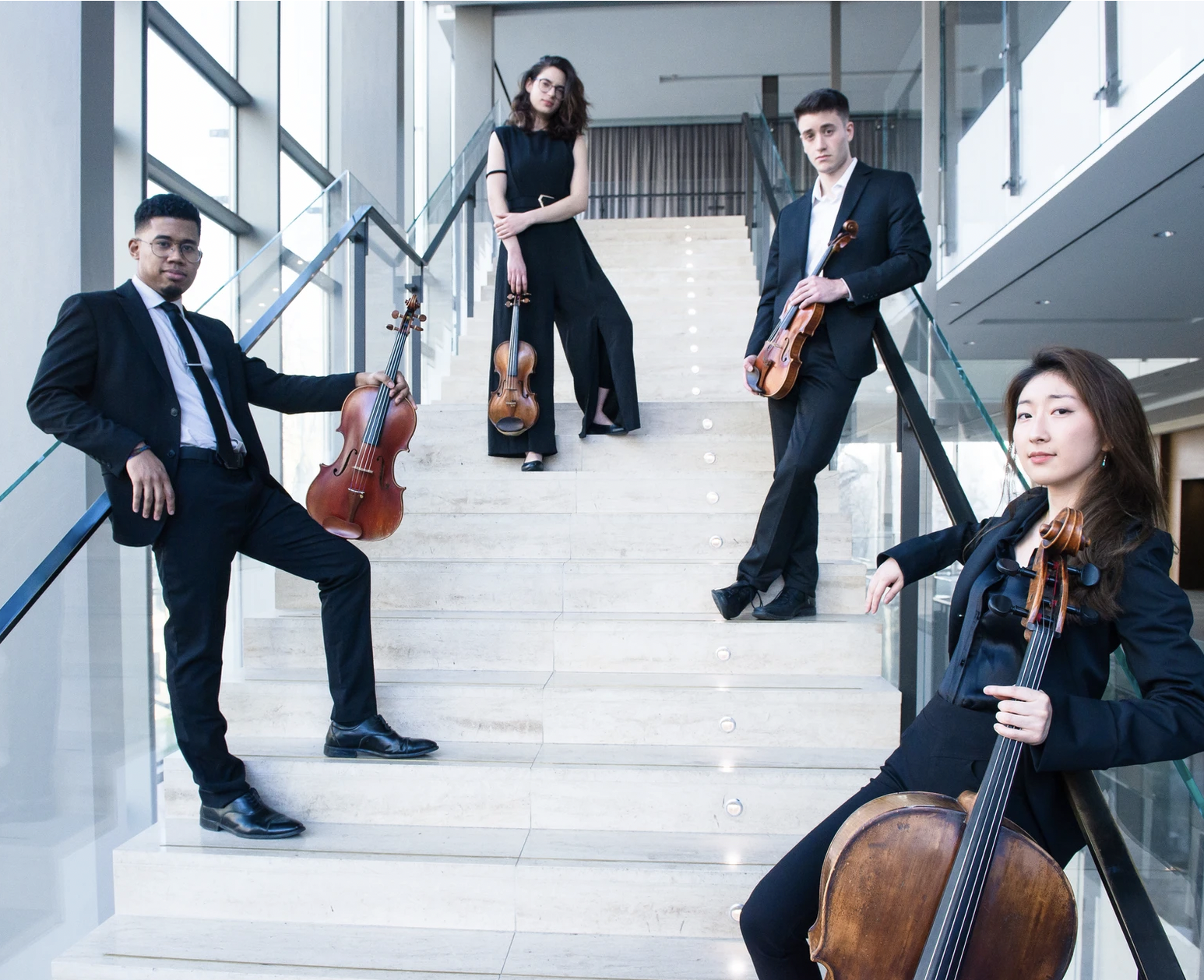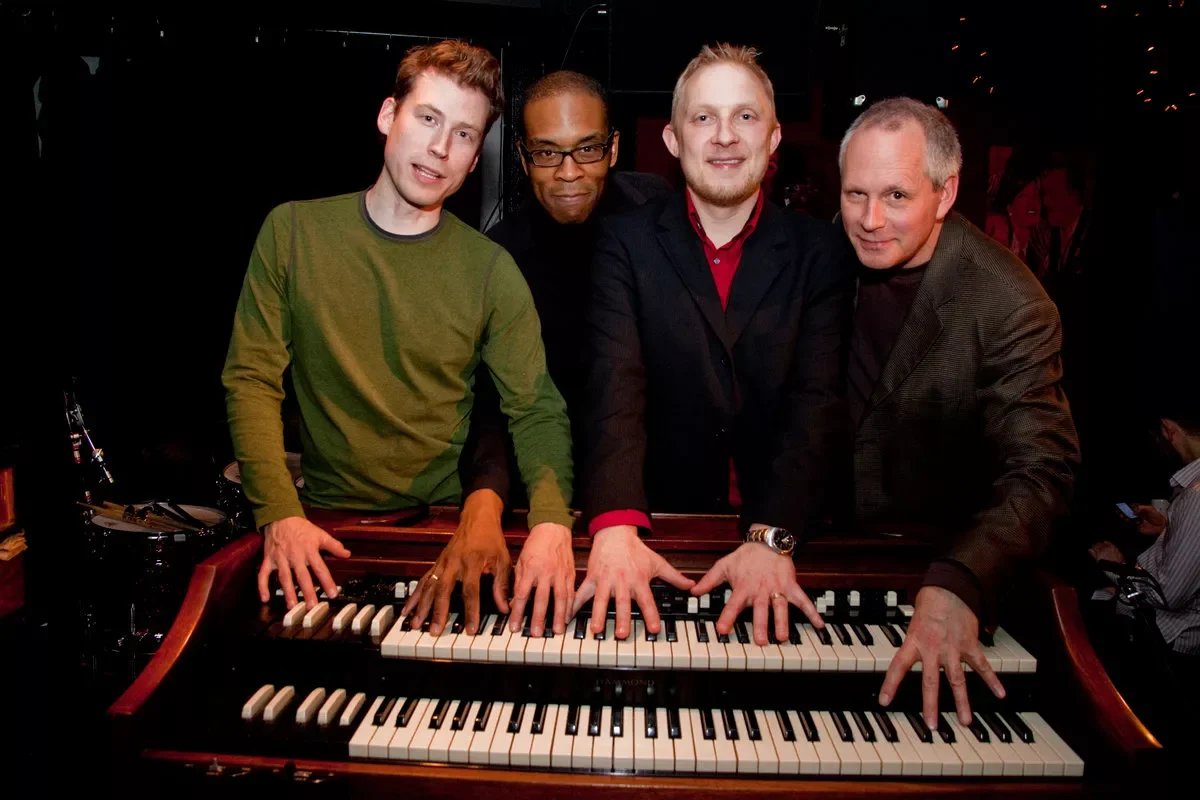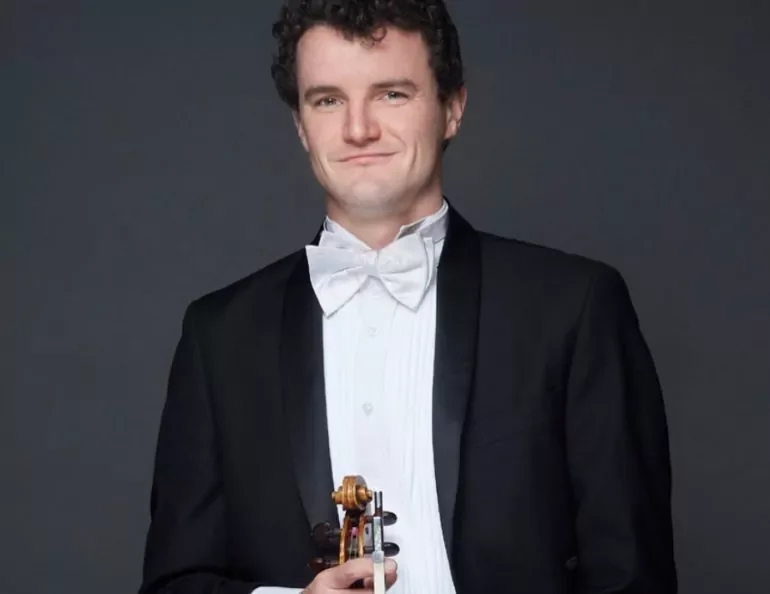For Dior Quartet, different backgrounds come together in perfect harmony
Appearing with Music on Main, string group jumps from Romanticism through Impressionism and on to the ultra-modern
Photo by Bo Huang
Music on Main presents the Dior Quartet at the Fox Cabaret on March 5
THE AIM OF EVERY string quartet is to achieve a cohesive blend of instruments, and in that regard the Dior Quartet follows standard practice. But in a rather refreshing way, it’s the group’s differences that give it its unique identity. Formed in the United States and now ensemble in residence at the Royal Conservatory of Music’s Glenn Gould School, the ensemble includes an Israeli first violinist, an American second violinist, a Korean-Canadian cellist, and a violist from the small Caribbean island of Saint Lucia.
It’s diversity in action, and it’s a beautiful thing.
“We use it as a superpower,” explains Tobias Elser, the American in the group, on the line from his Toronto home. “It’s one of the things that we’re proud to be able to showcase, and I think it makes us a little bit more unique than other groups.
“I mean, every group is unique; every group blends different cultures,” he adds. “But for us it’s something special. Having that mix, where we’re all coming from these very different backgrounds, really helps when we’re searching for repertoire. We actively seek our and perform a lot of repertoire from our different backgrounds, which I think sets us apart.”
A look at the young quartet’s website bears this out: the works in its repertoire include pieces by composers of diverse origin, from tropical Sri Lanka to chilly Yellowknife. For its Vancouver debut, however, violinists Elser and Noa Sarid, violist Caleb Georges, and cellist Joanne Yesol Choi are reining in their eclectic tendencies, presenting instead two masterpieces from the European canon and one relatively new work from their Toronto-based peer, composer Kevin Lau.
Featuring pieces that run from early Romanticism through Impressionism and on to the ultra-modern, Tuesday’s Music on Main concert at the Fox Cabaret is a good introduction to the band’s capabilities.
Elser admits that Franz Schubert’s Quartettsatz in C Minor, which opens, is an amuse-bouche of sorts. “It’s a short piece; it was originally going to be a full-length quartet, but unfortunately he didn’t get around to finishing it before he passed away. So it’s unfinished, but there’s a lot packed into its six minutes.
“The way he went about composing this piece, and I guess a lot of his chamber pieces, was through the relationships he had,” Elser continues. “What he wrote in a letter was that when he went to write about love it turned to sorrow in his music, and to write about sorrow, it turned to love. So you can hear both sides in this piece: maybe it’s heartbreak, or maybe it’s him being in love, or maybe it’s about a lover. We don’t really know, but the music, even in this short piece, tells quite a story. It’s a very emotional work.”
Storytelling also comes into play in Lau’s String Quartet No. 3. The first impression one could get from Lau’s composition is that while the writing is both striking and impressively detailed, it might lean a bit towards pastiche, so numerous are the moods and textures it explores in its 14 minutes. Elser admits that he and his bandmates leaned that way too, at least until the unfolding score worked its magic on their ears.
“A lot of contemporary music is similar in that way, where you don’t quite get it at first,” he says. “Even the performers themselves don’t always get the music on the first listen. but this is not so foreign as it might originally seem. It’s tonal; you’re not going to be disoriented the moment we start playing crazy-sounding chords or anything like that. I compare it to film music, because it takes you on a journey that you can sort of follow.”
What helped the musicians approach Lau’s score, which has the manic pace of a TikTok hit, was developing a rather filmic scenario to explain its ever-shifting textures.
“One of the things we talked about was that the beginning is kind of jazzy,” the violinist explains. “We set this very uneven sort of rhythmic pulse, but it’s also kind of comfortable in a way. We kind of thought about it as a paper plane. You know how with a paper plane you throw it, and sometimes it’ll go up and down, and it can just kind of float through the air? And while this paper plane is floating around, we can see the scenery behind it changing. It’s gliding through Toronto; it’s gliding through Paris. At one moment we kind of get to a rock ’n’ roll solo; Noa, our amazing first violinist, will suddenly just become a rock star and transform her violin into an electric guitar. It’s really wild; it gets really crazy all of a sudden—and then it gets back to this gliding, sort of chill sound. So we kind of approach it from the perspective of something gliding through the air, while the scenery behind it is ever-changing.”
After a break—which both musicians and audience will likely need—the Dior Quartet will return with something different yet again: Maurice Ravel’s String Quartet in F Major. Rather than moving at a heady and hectic pace, this work invokes a state of being that is “luxe, calme et volupté”, to borrow a phrase from the composer’s contemporary, Henri Matisse. And, according to Elser, the comparison to visual art is apt.
“When we first started playing the piece, we had difficulty finding the right kind of sound,” he allows. “It’s really challenging to get that blend, that beautiful blend that this type of French music really requires, with nothing sticking out in the wrong way. So we needed this beautiful sound, and then I would say that for imagery, we like to imagine different colours—like, literally, orange or blue. When we thought of it in those terms, we began to think ‘What if you were to paint Ravel? What if you were to show the music visually?’ You’d use a light stroke, and so with our bows we use a light stroke: not so detailed, not such a concentrated sound. You wouldn’t press down too hard on the canvas; you’d sort of brush these strokes lightly.
“You don’t want to force the sound,” he adds. “Even when it gets loud, it’s not violent: it’s exciting and fiery. That’s our approach to Ravel.”
![]()













